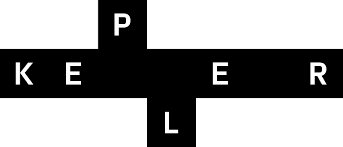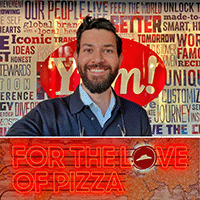Chief Marketing Officer Leadership Vision 2022 [REPORT]
 CMO priorities, trends and strategic actions for 2022
CMO priorities, trends and strategic actions for 2022
 CMO priorities, trends and strategic actions for 2022
CMO priorities, trends and strategic actions for 2022
 What do people value in life? How much of what gives people satisfaction in their lives is fundamental and shared across cultures, and how much is unique to a given society? To understand these and other issues, Pew Research Center posed an open-ended question about the meaning of life to nearly 19,000 adults across 17 advanced economies.
What do people value in life? How much of what gives people satisfaction in their lives is fundamental and shared across cultures, and how much is unique to a given society? To understand these and other issues, Pew Research Center posed an open-ended question about the meaning of life to nearly 19,000 adults across 17 advanced economies.
 Survey of Diverse Suppliers Reveals Advantages and Ease of Participation
Survey of Diverse Suppliers Reveals Advantages and Ease of Participation
 With digital media investment seeing more than twenty years of constant and at times staggering growth, it now dominates brands’ media budgets. This expansion has been accompanied by almost dizzying evolution of the digital media ecosystem. And the pace of change is only accelerating.
With digital media investment seeing more than twenty years of constant and at times staggering growth, it now dominates brands’ media budgets. This expansion has been accompanied by almost dizzying evolution of the digital media ecosystem. And the pace of change is only accelerating.
 Estrella Media announced that Steve Mandala, former President, Ad Sales & Marketing for Univision Communications and Executive VP, Cable Entertainment Sales for NBCUniversal, is joining the company as Chief Revenue and Local Media Officer. Mandala starts on December 1 and will be based out of the company’s New York office.
Estrella Media announced that Steve Mandala, former President, Ad Sales & Marketing for Univision Communications and Executive VP, Cable Entertainment Sales for NBCUniversal, is joining the company as Chief Revenue and Local Media Officer. Mandala starts on December 1 and will be based out of the company’s New York office.
![]() Brand advertisers have a lot to consider as they plan their strategies and navigate the increasing fragmentation of platforms and channels that consumers are engaging with. Yet while brands can use data to inform messaging, leverage modern martech to improve targeting and measure engagement to gauge performance, there is one facet of marketing that modern technology can’t help with: consumer trust.
Brand advertisers have a lot to consider as they plan their strategies and navigate the increasing fragmentation of platforms and channels that consumers are engaging with. Yet while brands can use data to inform messaging, leverage modern martech to improve targeting and measure engagement to gauge performance, there is one facet of marketing that modern technology can’t help with: consumer trust.
 The issues surrounding the sale of WPYO-FM to SBS by Cox Media Group has made headlines, most recently in HispanicAd and Radio + Television Business Report. As the lead authority on Hispanic Marketing, the Hispanic Marketing Council’s position on this matter is clear: The HMC supports fair competition, especially when it creates opportunities for diverse voices and minority-owned media. As a top-10 Hispanic market with a growing multicultural majority, Orlando benefits from having more choices in Spanish-language radio. The sale of Cox Media’s FM station to SBS, who has a long trajectory in operating leading radio stations in Puerto Rico and in the US, aligns with FCC’s mission to expand minority-owned media platforms and ultimately benefits Orlando’s thriving Latino community. We look forward to a timely resolution of this issue soon.
The issues surrounding the sale of WPYO-FM to SBS by Cox Media Group has made headlines, most recently in HispanicAd and Radio + Television Business Report. As the lead authority on Hispanic Marketing, the Hispanic Marketing Council’s position on this matter is clear: The HMC supports fair competition, especially when it creates opportunities for diverse voices and minority-owned media. As a top-10 Hispanic market with a growing multicultural majority, Orlando benefits from having more choices in Spanish-language radio. The sale of Cox Media’s FM station to SBS, who has a long trajectory in operating leading radio stations in Puerto Rico and in the US, aligns with FCC’s mission to expand minority-owned media platforms and ultimately benefits Orlando’s thriving Latino community. We look forward to a timely resolution of this issue soon.
 The ANA/AIMM recently released, “A Diversity Report for the Advertising/Marketing Industry,” examining diversity in client-side marketing departments. The report comes with a significant headline – Finally, there has been progress in increasing ethnic diversity! By Bill Duggan, Group EVP at Association of National Advertisers (ANA)
The ANA/AIMM recently released, “A Diversity Report for the Advertising/Marketing Industry,” examining diversity in client-side marketing departments. The report comes with a significant headline – Finally, there has been progress in increasing ethnic diversity! By Bill Duggan, Group EVP at Association of National Advertisers (ANA)
 The Hispanic marketing industry must take action and capitalize on the spotlight that is currently shining on diversity, inclusion and multicultural marketing. By Lee Vann – Captura Group
The Hispanic marketing industry must take action and capitalize on the spotlight that is currently shining on diversity, inclusion and multicultural marketing. By Lee Vann – Captura Group
 The panic over the impact supply chain snafus are having on how many ad dollars are spent during this quarter is probably overdone. Not because there won’t be notable cuts; they have already happened and continue to do so, according to the six ad execs interviewed for this article. Rather those dollars won’t be lost for good. They will be spent eventually in the quarter. The hard part for those execs is knowing when.
The panic over the impact supply chain snafus are having on how many ad dollars are spent during this quarter is probably overdone. Not because there won’t be notable cuts; they have already happened and continue to do so, according to the six ad execs interviewed for this article. Rather those dollars won’t be lost for good. They will be spent eventually in the quarter. The hard part for those execs is knowing when.
 Federico Valiente, previously Director of Marketing for Dallas based Pollo Campero has been named Director of Marketing at YUM Brands for Pizza Hut LAI. Mr. Valiente was honored recently as one of HispanicAd’d 2021 Hispanic Market Thought Leaders.
Federico Valiente, previously Director of Marketing for Dallas based Pollo Campero has been named Director of Marketing at YUM Brands for Pizza Hut LAI. Mr. Valiente was honored recently as one of HispanicAd’d 2021 Hispanic Market Thought Leaders.
 Observations, insights, and benchmarks for the modern marketer
Observations, insights, and benchmarks for the modern marketer
 The future for the media industry contains many uncertainties. We shine a spotlight on the risks and opportunities, in what will be a critical year for most.
The future for the media industry contains many uncertainties. We shine a spotlight on the risks and opportunities, in what will be a critical year for most.
 We’re still experiencing change from the pandemic as new consumer behaviors ripple through multiple sectors, some that will be with us for a long time. And new technologies and economic trends have sprung up as a result.
We’re still experiencing change from the pandemic as new consumer behaviors ripple through multiple sectors, some that will be with us for a long time. And new technologies and economic trends have sprung up as a result.
 There is a controversy brewing in the Orlando Market in Florida, where a COX Radio is required to sell one of their FM radio stations by law based on the number of radio station they own in the market, they don’t feel they have the price they want during the required sell-off period dictated by the Federal Communication Commission and Spanish Broadcasting System (SBS) has placed a viable offer to purchase the radio station above the current valuation of the Orlando FM station on the table.
There is a controversy brewing in the Orlando Market in Florida, where a COX Radio is required to sell one of their FM radio stations by law based on the number of radio station they own in the market, they don’t feel they have the price they want during the required sell-off period dictated by the Federal Communication Commission and Spanish Broadcasting System (SBS) has placed a viable offer to purchase the radio station above the current valuation of the Orlando FM station on the table.
 Undeterred, SBS moved ahead with making three all-cash offers, the final offer coming in ahead of the highest appraisal value presented by Bond & Pecaro. By Adam Jacobson – Editor in Chief
Undeterred, SBS moved ahead with making three all-cash offers, the final offer coming in ahead of the highest appraisal value presented by Bond & Pecaro. By Adam Jacobson – Editor in Chief
 mitú released the first of a series of studies titled The mitú InTell Series. The studies aim to gain and socialize insights on the current state of the U.S. Hispanic community while digging deeper into their motivations and behaviors behind topics ranging from health and wellness to finance, sports, food, commerce, and travel.
mitú released the first of a series of studies titled The mitú InTell Series. The studies aim to gain and socialize insights on the current state of the U.S. Hispanic community while digging deeper into their motivations and behaviors behind topics ranging from health and wellness to finance, sports, food, commerce, and travel.
 As the global benchmark of creative excellence, what can the winners at Cannes teach brands? The winning features of creative brand storytelling.
As the global benchmark of creative excellence, what can the winners at Cannes teach brands? The winning features of creative brand storytelling.
 Imagination is more than artistic flair or aesthetic virtuosity. It is a way of working built from the ground up, with a set of structures, processes, and practices that enable business leaders to apprehend, understand and react to the marketplace in smarter, more original, and more impactful ways.
Imagination is more than artistic flair or aesthetic virtuosity. It is a way of working built from the ground up, with a set of structures, processes, and practices that enable business leaders to apprehend, understand and react to the marketplace in smarter, more original, and more impactful ways.